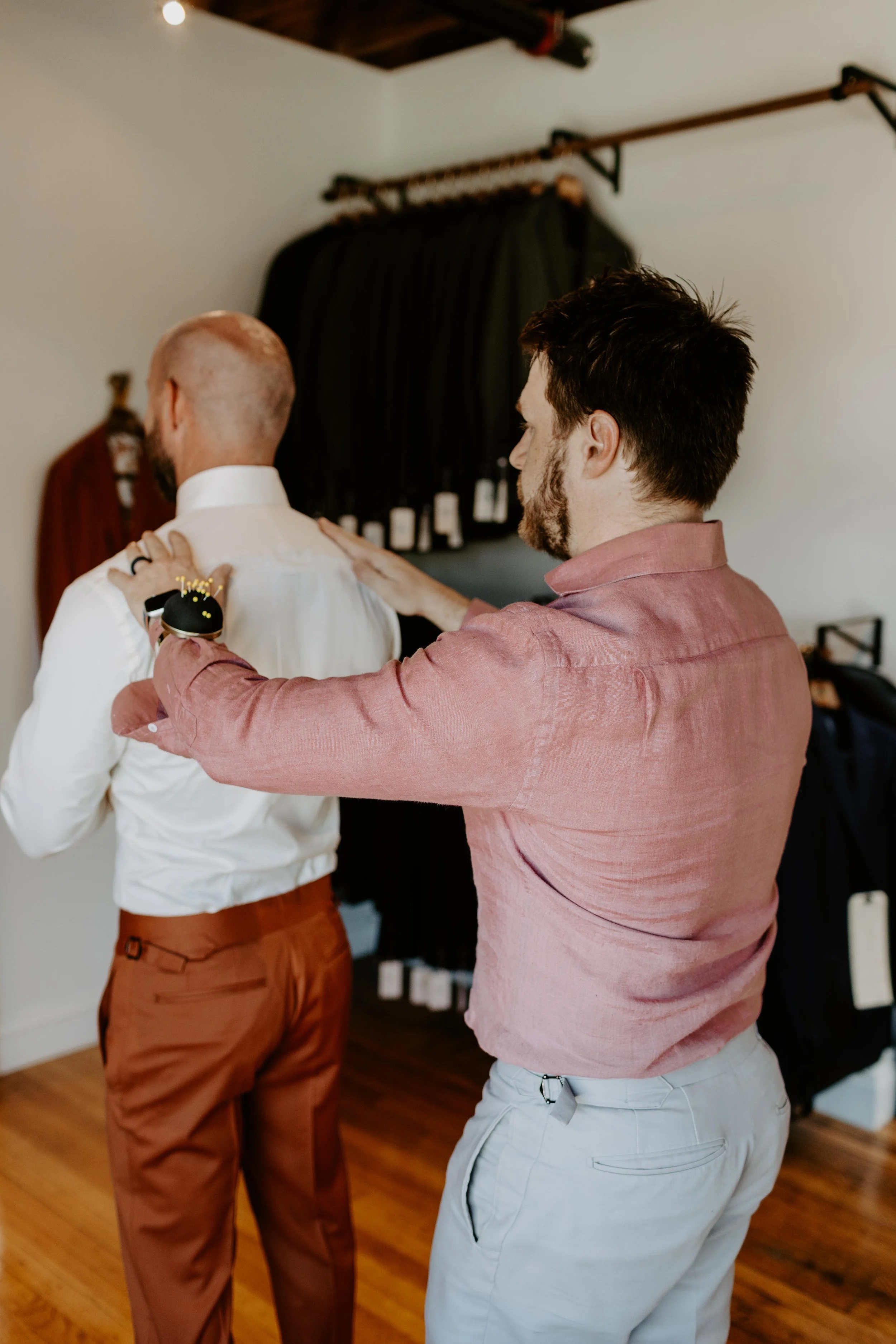What is Bespoke? Explaining the Three Levels of Make
I get asked all the time, “What is bespoke?” And while I could talk all day about the details of bespoke, I think it is best first, to understand the different levels of make. When it comes to the world of tailored clothing, understanding the distinctions between ready-to-wear, made-to-measure, and bespoke is crucial. Each level of craftsmanship offers a unique approach to creating garments that cater to individual preferences and body measurements. In this article, we will delve into the realm of bespoke tailoring, exploring its significance and how it stands out from the other two methods of garment creation.
Ready to Wear: Finding the Ideal Fit for the Masses
Ready-to-wear garments epitomize the convenience and accessibility of off-the-rack fashion. When you walk into a store and browse through the racks, what you're encountering is a collection of standardized sizes created by pattern makers. These pattern makers diligently craft a standard size based on the ideal client for the brand. Some brands cater to customers with a slender silhouette, while others cater to those with larger proportions. To achieve this, they build an ideal mannequin that represents their target customer and then create various sizes around it through a process known as grading. For instance, they might start with a medium size and then grade it up to a large or extra-large, or even assign numerical sizes such as 38, 40, 42, and so on. This grading system allows ready-to-wear brands to offer a range of sizes that accommodate different body types and proportions.
In the realm of ready-to-wear, the focus is primarily on mass production and meeting the needs of a wide customer base. While it provides the convenience of readily available garments, the downside is that these standardized sizes might not fit perfectly for every individual.
Made to Measure: Tailoring for Personalized Fit
Made to measure occupies a unique position in the realm of tailored clothing. Unlike ready-to-wear, made-to-measure garments start with existing patterns that serve as the foundation for customization. These patterns, which are cut out from the fabric and then meticulously sewn together, form the basis of the final piece. With made-to-measure, the initial patterns are already in place, but they undergo modifications to ensure a personalized fit for the individual client. While it doesn't involve creating an entirely new pattern from scratch, the process still entails crafting an original pattern specific to the client's measurements. This allows for a considerable degree of flexibility in achieving a precise fit that caters to the client's unique body shape and proportions.
However, it's important to note that there can be limitations within the made-to-measure realm, depending on the brand or company you choose to work with. Some brands adhere to strict guidelines and have limited options for customization, while others, often artisan houses, offer a broader range of possibilities within the made-to-measure system. These artisan houses possess the expertise and craftsmanship to push the boundaries of customization, allowing for a more extensive repertoire of alterations and design choices. While made-to-measure offers a higher level of personalization compared to ready-to-wear, it's essential to find the right brands and companies to find the one that aligns with your preferences and desired level of customization.
Bespoke: The Epitome of Personalized Craftsmanship
Bespoke, the pinnacle of sartorial excellence, represents the third and most revered method of creating tailored garments. Unlike ready-to-wear and made-to-measure, bespoke garments are characterized by the creation of an original pattern specifically tailored to the individual client. This process begins by eschewing the standard block sizes used in the industry and instead drawing a brand-new pattern based solely on the client's measurements and unique body shape. As a bespoke pattern maker, my role entails crafting these one-of-a-kind patterns that serve as the blueprint for the client's bespoke garment. These bespoke patterns are meticulously cut and expertly sewn to bring the design to life.
When it comes to bespoke suits, there's a widespread debate about the amount of handwork that should be involved. Personally, I believe a bespoke suit should have a minimum of 50 hours of handwork. Esteemed tailoring houses like those on Savile Row adhere to a standard ranging from 60 to 80 hours of meticulous hand craftsmanship. While made-to-measure and bespoke suits may appear similar in terms of fit, there is a stark contrast in the level of artisanal craftsmanship. A bespoke suit is not merely a garment that fits impeccably; it is a masterpiece created by skilled artisans. Almost every stitch is meticulously executed by hand, elevating the suit to a work of art. When you wear a bespoke suit, you are donning more than a garment to cover your body; you are wearing a symbol of craftsmanship and artistry everywhere you go.
While made to measure offers an exceptional level of fit, bespoke, particularly the esteemed Bench-made Bespoke, stands as the epitome of excellence, representing the pinnacle of craftsmanship and the ultimate choice for discerning individuals seeking the finest suits available.



